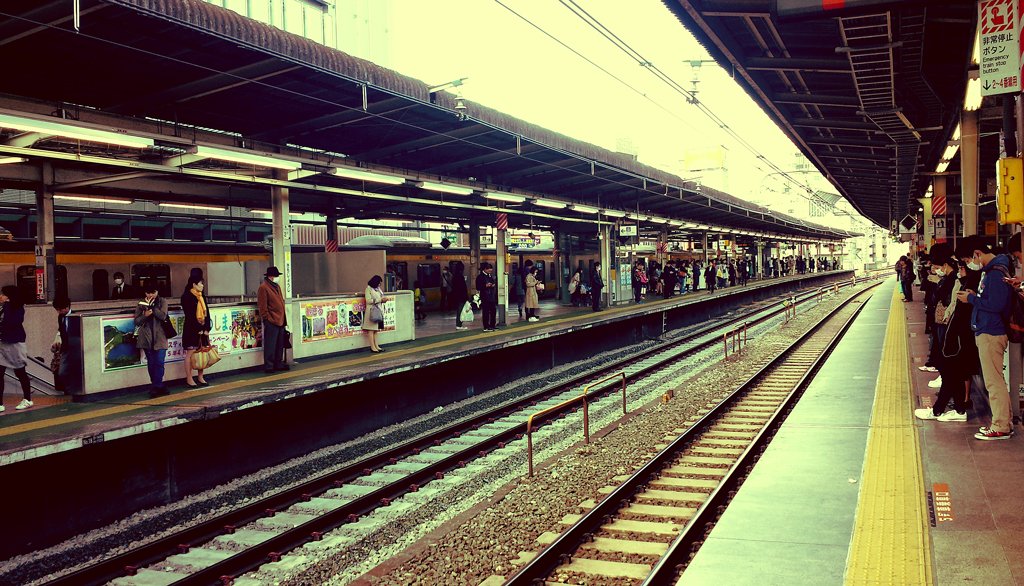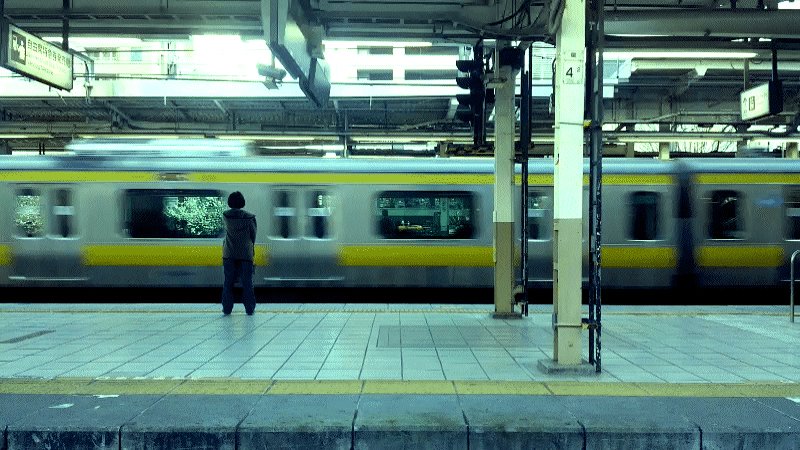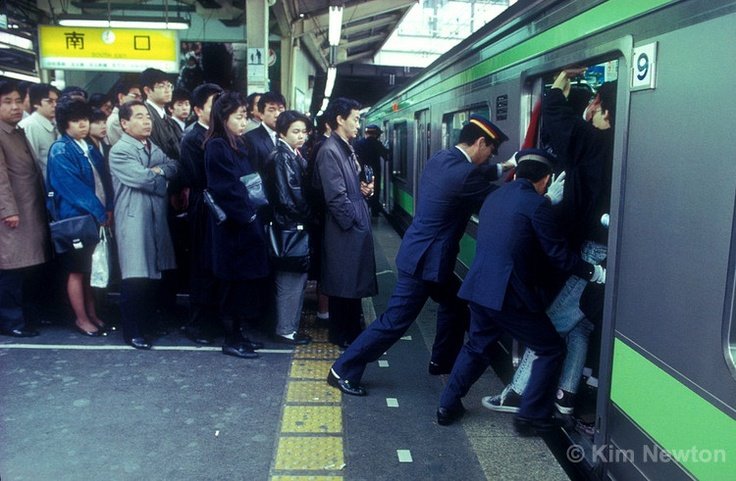 The daily grind on the Chuo Line.
The daily grind on the Chuo Line.
I can think of no better way to enjoy a brisk autumn day than a bike ride, especially if it ends at the park, paired wonderfully with wine and cheese. I have been an avid cyclist my entire life, foregoing buying a car out of principle , instead dreaming of the parts I could buy for my next bike build. Tokyo seemed like a cyclist’s dream, and for the most part that statement holds true. Yet ultimately we must face certain realities: the geographical vastness and frenzied pace of life in Tokyo.
If I leave for work an hour earlier, I may be able to cycle there in time. But what if there’s a meeting in Yokohama? That’s another two hours, I’d never make it home. It soon dawned on me with a crushing sense of defeat that, just like almost everyone else in Tokyo, I would have to use the train and subway systems as part of my daily commute.
Japan Rail, Keio, Tokyu, Seibu, Tokyo Metro, etc., there are almost as many operators as there are rail lines. The Greater Tokyo Area is home to the world’s largest transport network, and over half the population uses it as a primary means of transportation. An overlay of the metro and rail maps reveals a chaotic spiderweb of transfers, routes, and cross-stations. Upon my arrival it all seemed a bit too labyrinthine, but there is an odd method to the madness when you realise the sheer volume of daily riders most stations have to accommodate.
Below I’ve outlined some of the core tenets of riding in the GTA, so learn from my blunders! Navigating the rails will become second-nature (whether you like it or not).
-
- ▸ Plan your route ahead of time. A trip that would be fairly direct via car could be quite complicated using railways, especially heading towards the centre of Tokyo. Although delays are inevitable, the monitors above each railcar door communicate pertinent information. Sites like Jorudan and Google Maps (Along with their respective smartphone apps) are invaluable tools.
- ▸ Do not be surprised if the fare price is ridiculous. If you intend on working in Japan, discussing travel accommodation from your employer is reasonable, if not expected. Price is determined relative to your distance from your destination, unlike the single fare you would expect on a Western transportation line. If it’s not too far, it can sometimes be cheaper and faster to walk.
- ▸ Ditch the paper tickets after you’ve gotten your bearings. A PASMO / Suica charge card may only offer a two-yen fare discount, but save you the hassle of carrying fistfuls of coins or worrying about losing your paper fare. Losing a ticket between stations could turn into a complete nightmare, transit officials regard it as a major offense. PASMO cards are also accepted as debit in shops around stations and combinis.
- ▸ Wait in the demarcated lines and queue up on the platform. Allow passengers to deboard before filing in (do not cut the queue!). The Japanese are too well-mannered and soft-spoken to call out your misstep, but rest assured you are not doing anything to help the gaijin cause.
- ▸ As a gaijin, do not be surprised or offended if some passengers go out of their way to avoid sitting next to you, even if there are plenty of empty seats, Maybe your beard is too big, your clothes too loud and colourful, or you’re showing too much cleavage – maybe there’s a gaijin pheromone our noses have not adapted to yet. It happens.
- ▸ Talking at any length for anyone over student age is frowned upon in direct proportion to how crowded the car is. Keep the murmuring to a minimum and phonecalls for emergencies only.
 A rare glimpse of solitude.
A rare glimpse of solitude. - ▸ Tokyo is a vertically integrated city, and space comes at a premium. The same applies to the train. Occupy the smallest amount of real estate possible, even when standing or trying to grab a quick nap. Bring extra baggage only if absolutely necessary. While it may be tempting to sprawl out after a long day at work, remember you are but a Tetris piece on a moving puzzle. Comfort yourself with reminders that a hot shower and warm bed await you at home.
- ▸ In a work culture like Japan, someone nodding off and falling asleep on your shoulder is fairly routine. Many people have grueling schedules that involve lengthy commutes, it might be their only time in the day to get some rest. More specifically, you are guaranteed to fall asleep on someone else at some point during your stay in Japan.
- ▸ If possible avoid the larger stations directly after the end of the workday, as everyone will be rushing to get home. Riders are literally poked and prodded onto cars in an effort to pack each car like sardines in a tin box. Unless you enjoy body contortion, a sudden sense of claustrophobia, or the odd elbow in your back, grab a cup of coffee and take the train twenty minutes later. Your muscles will thank you.
- ▸ The bilingual intercom will switch to Japanese-only after 6 PM, especially along the older or less populated rail / metro lines.
 It feels worse than it looks.
It feels worse than it looks. - ▸ Signage is important, and very often not in English. Take the time to learn the Kanji and Hiragana / Katakana symbols for your most frequented stops. I can more easily recognize ‘Hachioji’ now out of a list of stations than its English spelling ( Hachioji Station).
- ▸ Passengers will blatantly stare at whatever you are reading, drawing, playing, or attempting to write (there were at least four sets of eyes on me as I scribbled the first draft of this article into my notebook). To salvage what little privacy remains , or avoid embarrassment most Japanese people will cover their literature with nondescript material. If you err on the more clandestine side, by all means follow suit. Personally, I find it strange and counterintuitive, a small glimpse into one of the larger problems in modern Japanese culture. It is a topic of contention among members of the sharehouse, where opinions and reasoning for ‘The Great Covering’ are greatly divided.
- ▸ Last but not least, pick a station at random, a station not on your usual route and make that your destination. Traveling (and getting lost) on the web of rails is one of the easiest ways to discover little corners of Tokyo you wouldn’t have never known existed.

Send help!
If you have anything to add, or just flat-out think I’m wrong, I’d love to hear your opinions. My contact information is below.